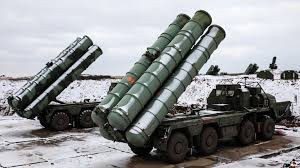The S-400 and its importance in the context of Indian border security
- singhchauhanshivan
- Jul 18, 2020
- 2 min read
What is the S-400 and what are its capabilities?
The S-400 is the most modern air defence system in the Russian arsenal meant for export. The Almaz S-300P/S-400 family of Surface to Air Missile systems is without doubt the most capable SAM (Surface to Air Missile) system in widespread use in the Asia Pacific region. From its genesis during the 1970s this former Soviet PVO system has continuously evolved, through a series of incremental and larger enhancements.

It is capable of destroying incoming hostile aircraft, missiles and even drones within a range of up to 400 km. It has a tracking capability of nearly 600 km and is a significant part of Russian deterrence efforts in the Bosphorous as well as the Middle East.
The system has been designed to knock down flying targets, including those equipped with stealth technologies, at a distance of about 400 km. It is also capable of taking out ballistic missiles and hypersonic targets. It’s capabilities extend on to detection of over a hundred simultaneously flying objects while retaining the ability to engage with over a dozen targets at the same time.
India’s S-400 Triumf air defence system is currently in production in Russia and will undergo a series of trials before its arrival in the country by the end of 2021.
Amidst constant rising tensions with China at the Line of Actual Control in Ladakh, Russia has decided to continue supply of certain kinds of missiles and bombs for the Indian Air Force and the Army as part of emergency procurement. The same has seen tacit reaffirmation during the recent visit of Defence Minister Rajnath Singh to Russia.

India has sought the delivery of a number of items including aircrafts and defence equipment from Russia, USA, Israel and France with the move coming as a “shot in the arm” for defence operations across the LAC. The move comes as a ploy for consolidation and hope for achieving a degree of parity with China which already boasts of its own S-400 systems.
Deliveries of the S-400 systems are expected to begin within 24 months from the payment of the first tranche. The deal has seen considerable delay from its original scaled timeline due to India having to dodge US and EU sanctions on Russia.
The move comes as a vital improvement to defence capabilities and promises to be the center of more innovation as India continues its rapid expansion of military capability in the face of an ever growing threat of Chinese aggression.


















Comments